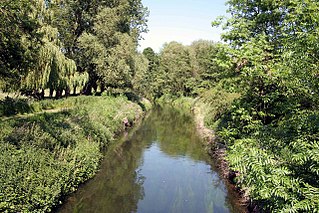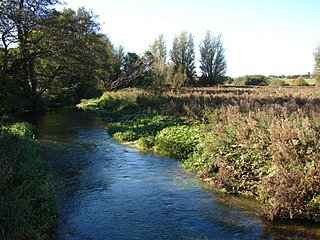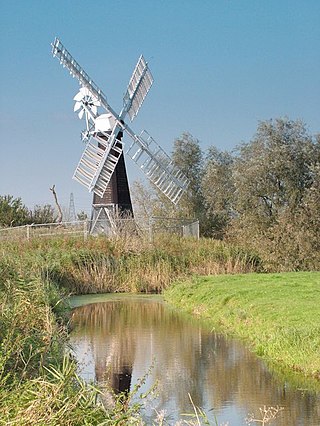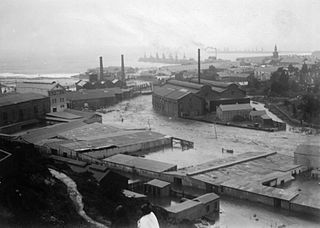In law and insurance, a proximate cause is an event sufficiently related to an injury that the courts deem the event to be the cause of that injury. There are two types of causation in the law: cause-in-fact, and proximate cause. Cause-in-fact is determined by the "but for" test: But for the action, the result would not have happened. The action is a necessary condition, but may not be a sufficient condition, for the resulting injury. A few circumstances exist where the but-for test is ineffective. Since but-for causation is very easy to show, a second test is used to determine if an action is close enough to a harm in a "chain of events" to be legally valid. This test is called proximate cause. Proximate cause is a key principle of insurance and is concerned with how the loss or damage actually occurred. There are several competing theories of proximate cause. For an act to be deemed to cause a harm, both tests must be met; proximate cause is a legal limitation on cause-in-fact.

The River Idle is a river in Nottinghamshire, England whose source is the confluence of the River Maun and River Meden near Markham Moor. The Idle flows north from its source through Retford and Bawtry before entering the River Trent at West Stockwith. Its main tributaries are the River Poulter and the River Ryton. The river is navigable to Bawtry, and there is a statutory right of navigation to Retford. Most of the land surrounding the river is a broad flood plain and the river is important for conservation, with Sites of Special Scientific Interest being designated along its course.

Warragamba Dam is a heritage-listed dam in the outer South Western Sydney suburb of Warragamba, Wollondilly Shire in New South Wales, Australia. It is a concrete gravity dam, which creates Lake Burragorang, the primary reservoir for water supply for the city of Sydney. The dam wall is located approximately 65 kilometres (40 mi) W of Sydney central business district, 4½ km SW of the town of Wallacia, and 1 km NW of the village of Warragamba.

The River Nar is a river in England, a tributary of the River Great Ouse. It rises at Mileham near Litcham in Norfolk and flows 15 miles west through Castle Acre and Narborough, joining the Ouse at King's Lynn. It has had a variety of alternative names, such as the Setch, the Sandringham, and Lynn Flu, though these are rarely, if ever, used today. In 2011 the Nar was recognised by the Environment Agency as one of the top ten most improved rivers in England and Wales.
The tort of negligent infliction of emotional distress (NIED) is a controversial cause of action, which is available in nearly all U.S. states but is severely constrained and limited in the majority of them. The underlying concept is that one has a legal duty to use reasonable care to avoid causing emotional distress to another individual. If one fails in this duty and unreasonably causes emotional distress to another person, that actor will be liable for monetary damages to the injured individual. The tort is to be contrasted with intentional infliction of emotional distress in that there is no need to prove intent to inflict distress. That is, an accidental infliction, if negligent, is sufficient to support a cause of action.

Trespass to land is a common law tort or crime that is committed when an individual or the object of an individual intentionally enters the land of another without a lawful excuse. Trespass to land is actionable per se. Thus, the party whose land is entered upon may sue even if no actual harm is done. In some jurisdictions, this rule may also apply to entry upon public land having restricted access. A court may order payment of damages or an injunction to remedy the tort.

Anns v Merton London Borough Council[1977] UKHL 4, [1978] AC 728 was a decision of the House of Lords that established a broad test for determining the existence of a duty of care in the tort of negligence, called the Anns test or sometimes the two-stage test for true third-party negligence. The case was overruled by Murphy v Brentwood DC [1991].

Kamloops v Nielsen, [1984] 2 SCR 2 ("Kamloops") is a leading Supreme Court of Canada decision setting forth the criteria that must be met for a plaintiff to make a claim in tort for pure economic loss. In that regard, the Kamloops case is significant because the Supreme Court adopted the "proximity" test set out in the House of Lords decision, Anns v Merton LBC. Kamloops is also significant as it articulates the "discoverability principle" in which the commencement of a limitation period is delayed until the plaintiff becomes aware of the material facts on which a cause of action are discovered or ought to have been discovered by the plaintiff in the exercise of reasonable diligence. This was later adopted and refined in Central Trust Co v Rafuse. Finally, Kamloops develops the law governing circumstances where a plaintiff can sue the government in tort.
The administrative divisions of Virginia are the areas into which the Commonwealth of Virginia, a U.S. state, is divided for political and administrative purposes. Some are local governments; others are not. However, all local governments are political subdivisions of the state.

Albert Pike Recreation Area is a recreational area located in the Ouachita National Forest about 6 miles north of Langley, Arkansas, in southern Montgomery County, featuring swimming and camping areas on the Little Missouri River.

Smith v Eric S Bush [1990] UKHL 1 is an English tort law and contract law case, heard by the House of Lords. First, it concerned the existence of a duty of care in tort for negligent misstatements, not made directly to someone relying on the statement. Second, it concerned the reasonableness of a term excluding liability under the Unfair Contract Terms Act 1977, s 2(2) and s 11.
Administrative liability in English law is an area of law concerning the tortious liability of public bodies in English law. The existence of private law tort applying to public bodies is a result of Diceyan constitutional theory suggesting that it would be unfair if a separate system of liability existing for government and officials. Therefore, a public body which acts ultra vires is liable in tort is a cause of action can be established just like any individual would be. An ultra vires action will not, per se, give rise to damages Therefore, a claimant will have to fit into one of the recognised private law courses of action. These areas in which a public body can incur private liability in tort were described by Lord Browne Wilkinson in X v Bedfordshire County Council [1995] 3 All ER 353 (HL).

Dutton v Bognor Regis Urban District Council [1972] 1 QB 373 is an English contract law and English tort law case concerning defective premises and the limits of contract damages. It was disapproved by the House of Lords in Murphy v Brentwood DC and is now bad law except in Canada and New Zealand.

Green v Lord Somerleyton is an English land law and tort law case, concerning easements of surface water/ditch drainage and the tests for nuisance in English law. In this case there was no remedy for the flooding found to be natural and not recently exacerbated by the defendant. The court attached to the properties an old, 1921, easement of drainage passing both land holdings, in this case two common examples of lowland water engineering, dykes controlled against tides by one-way valves, mentioned in the properties' deeds and, duplicatively, established the right by prescription. The dykes lay in the claimant's own land who had failed to maintain them and failed to account for the flows caused by reduction of water extraction from the lake upstream. The claimant had failed to repair the pump and clear ditches on his own land which had been agreed between the previous owners to give channelled drainage from a lake above. It was for the claimant to recognise the danger posed by its waterline being raised in 1954 by the building up of a weir.

Craig v East Coast Bays City Council [1986] 1 NZLR 99 is a cited case in New Zealand regarding council liability for negligent inspection.

Stieller v Porirua City Council [1986] 1 NZLR 84 is a cited case in New Zealand regarding council liability in tort for negligent inspection.

Invercargill City Council v Hamlin [1994] 3 NZLR 513, [1996] 1 NZLR 513 is a cited case in New Zealand regarding council liability for negligent inspection, as well the issue in tort when the start period for the statute of limitations for a latent defect begins.

Mount Albert Borough Council v Johnson [1979] 2 NZLR 234 is a cited case in New Zealand regarding the Statute of Limitations defence in tort claims.

Robin Bartleman is an American legislator and educator serving as a member of the Florida House of Representatives from the 103rd district. She assumed office on November 3, 2020. She is a Democrat, supporting affordable housing, resolving the state's property insurance crisis, dealing with flooding and increasing healthcare affordability.

The 1908 Port Elizabeth flood was a devastating flood that occurred on 16 November 1908 in Port Elizabeth, caused by a heavy downpour typical of the coastal areas in South Africa, that led the Baaken's River to come down in flood.













